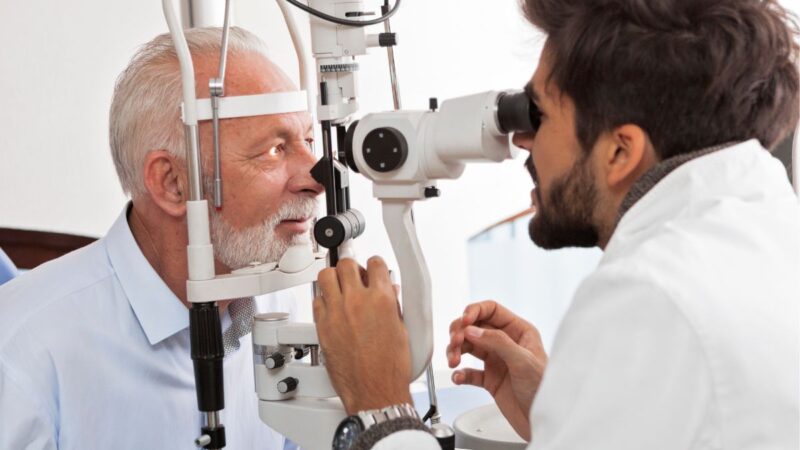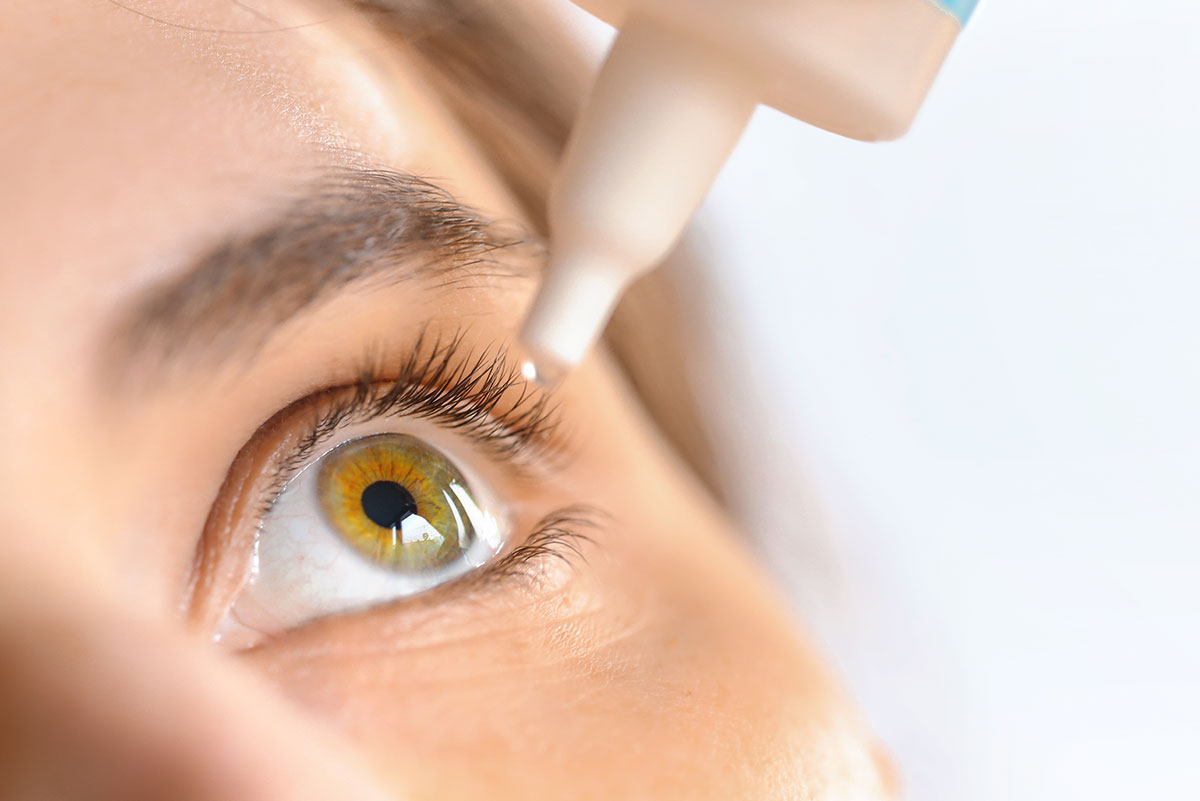Premier Refractive Surgeries in AL: Advanced Techniques at Our Clinic
Premier Refractive Surgeries in AL: Advanced Techniques at Our Clinic
Blog Article
Exploring the State-of-the-Art Technologies Utilized for Diagnosing and Dealing With Eye Conditions
In the realm of ophthalmology, the advancement of technology has significantly enhanced the tools readily available for diagnosing and dealing with various eye problems. From advanced imaging innovations that supply thorough insights into eye structures to robotic-assisted procedures that supply unparalleled precision, the landscape of eye care is frequently evolving. With the assimilation of expert system in diagnostics, genetics treatment developments, and digital truth rehabilitation, the possibilities for boosting client outcomes are broadening at a quick speed. The convergence of these innovative modern technologies holds the guarantee of reinventing the field of ophthalmology, using brand-new methods for personalized and reliable therapies.

Advanced Imaging Technologies
Advanced Imaging Technologies have changed the area of ophthalmology by giving accurate and comprehensive visualization of the eye frameworks. This non-invasive strategy help in the very early discovery and monitoring of different eye problems such as macular deterioration, diabetic retinopathy, and glaucoma.
In Addition, Fundus Digital photography is another necessary tool in sensory imaging. This technique involves recording comprehensive photos of the rear of the eye, consisting of the retina and optic disc. Fundus Photography assists in recording the progression of eye illness, examining treatment effectiveness, and informing people regarding their eye wellness.

Robotic-Assisted Surgery
Robotic-assisted surgeries have actually dramatically advanced the capacities of ocular surgery, introducing a new age of precision and efficiency in dealing with different eye problems. By integrating robotic technology right into surgeries, ophthalmologists can attain unequaled accuracy and control, bring about improved client results.
Among the primary benefits of robotic-assisted surgery in ophthalmology is the enhanced mastery and security it provides to doctors. The robot arms can carry out precise movements with a high level of accuracy, enabling fragile treatments with very little invasiveness. This level of precision is specifically beneficial in surgeries involving the retina, where also small mistakes can have significant effects for a client's vision.
In addition, robotic-assisted medical systems provide real-time imaging and comments to the specialist, enabling them to make educated decisions during the procedure. This modern technology enhances the cosmetic surgeon's situational understanding and permits modifications to be made without delay, ensuring optimal outcomes for the patient.
Artificial Intelligence in Diagnostics
With the advancement of innovative technologies improving surgical precision in sensory treatments, the integration of Expert system in diagnostics has actually arised as an essential development try this transforming the field of eye treatment. Expert System (AI) algorithms are being increasingly made use of to assess complex data from imaging technologies like optical coherence tomography (OCT) and fundus photography to aid in the early detection and accurate diagnosis of different eye problems. These AI systems can efficiently identify patterns and anomalies in photos that might not be discernible to the human eye, allowing quicker diagnosis and therapy planning.
AI algorithms can also predict illness development, advise individualized therapy plans, and evaluate the performance of interventions. By streamlining the diagnostic process, AI not just boosts the effectiveness of eye care experts yet also enhances person results by making it possible for prompt treatments. As AI continues to advancement, its function in diagnostics is expected to broaden, offering new possibilities for early intervention and individualized therapy in the field of ophthalmology.
Gene Therapy Innovations
In the world of ophthalmic developments, recent strides in genetics treatment developments have sparked substantial passion amongst researchers and health care specialists alike. Genetics therapy holds tremendous promise in revolutionizing the therapy of numerous eye conditions by targeting the underlying genetic causes. By introducing hereditary product right into cells to make up for uncommon genetics or to offer a missing genetics, gene therapy offers a personalized method to addressing acquired eye conditions such as retinitis pigmentosa, Leber congenital amaurosis, and others that were formerly taken into consideration untreatable.

As research study in gene treatment continues to breakthrough, the potential for tailored treatments for a wider array of eye conditions expands, offering new expect individuals with genetic eye illness.
Virtual Truth Rehabilitation
Virtual reality rehabilitation has actually arised as an advanced method in boosting the recuperation and recovery procedures for people with various visual disabilities. glaucoma service near me. By my sources imitating real-world atmospheres with immersive innovation, online reality uses a special system for vision therapy and rehabilitation. This ingenious method allows individuals to take part in interactive workouts and activities created to enhance aesthetic skill, deepness assumption, eye control, and general visual performance
One key benefit of digital reality rehabilitation is its capacity to customize therapy programs based upon the certain requirements and capacities of each individual. With real-time responses and monitoring, healthcare experts can track progression, change treatments, and give customized treatment to optimize results. In addition, virtual fact technology can produce a secure and controlled space for people to practice visual jobs, get rid of challenges, and build confidence in a virtual setup prior to transitioning to real-world circumstances.
Final Thought
In verdict, the advancements in imaging innovations, robotic-assisted surgeries, fabricated knowledge diagnostics, gene therapy advancements, and digital reality recovery have actually site dramatically improved the medical diagnosis and treatment of eye conditions. retina service near me. These advanced technologies have changed the field of ophthalmology, allowing for even more precise and reliable procedures. As technology remains to evolve, the future of eye care looks encouraging with the possibility for even more ingenious solutions to enhance individual results
In the realm of ophthalmology, the evolution of technology has considerably enhanced the devices readily available for diagnosing and dealing with numerous eye conditions. Fundus Photography aids in recording the progression of eye diseases, reviewing therapy effectiveness, and educating people regarding their eye health.
Fabricated Knowledge (AI) algorithms are being increasingly made use of to examine complicated data from imaging modern technologies like optical comprehensibility tomography (OCT) and fundus photography to aid in the early discovery and exact diagnosis of different eye problems.In final thought, the developments in imaging technologies, robotic-assisted surgeries, synthetic intelligence diagnostics, genetics therapy innovations, and digital fact rehab have significantly boosted the diagnosis and therapy of eye problems. As technology proceeds to develop, the future of eye care looks promising with the possibility for also more cutting-edge options to improve individual results.
Report this page